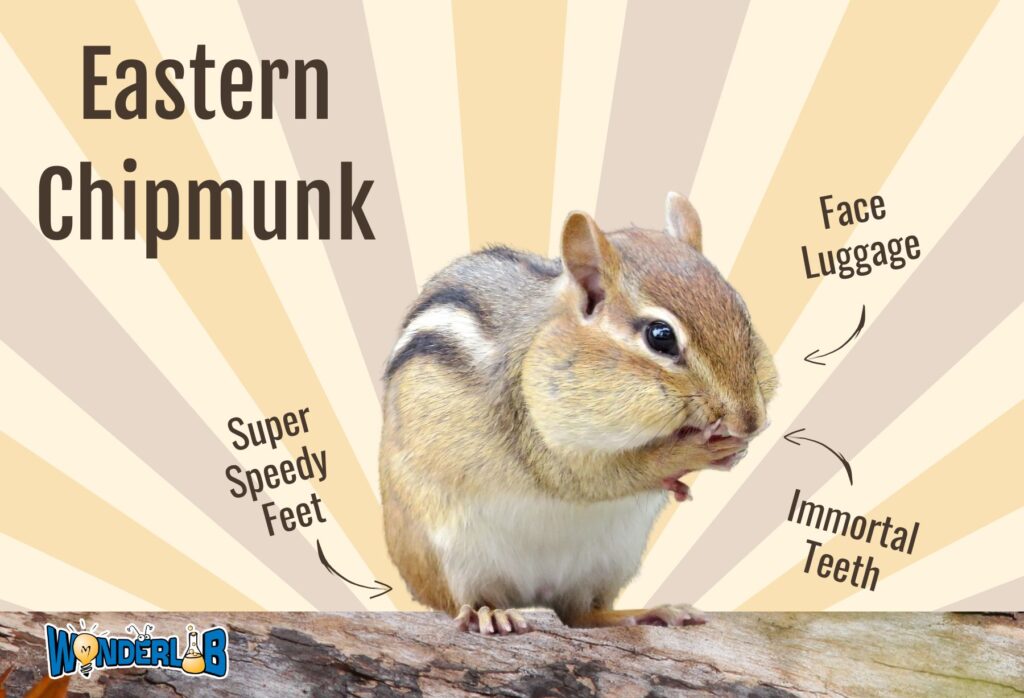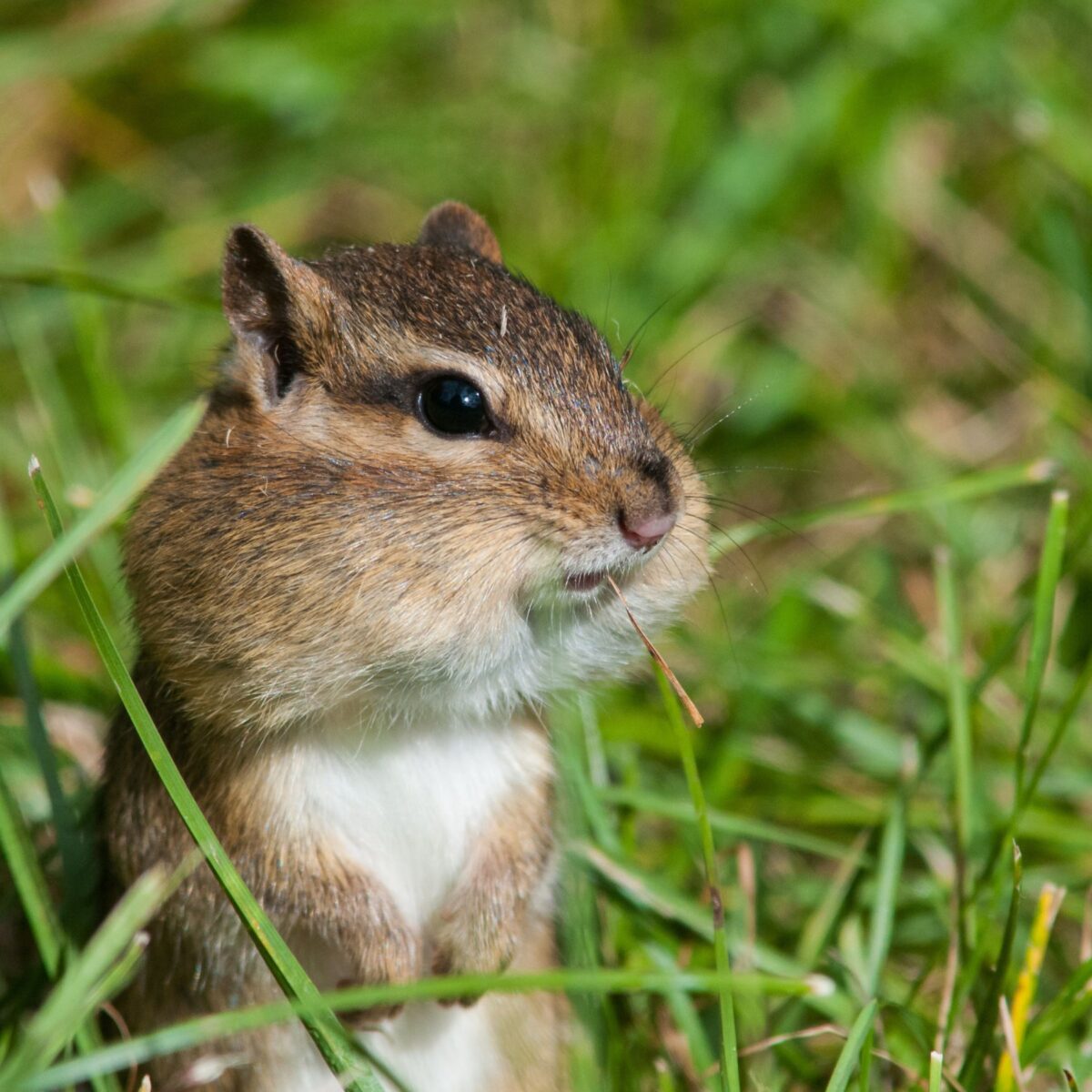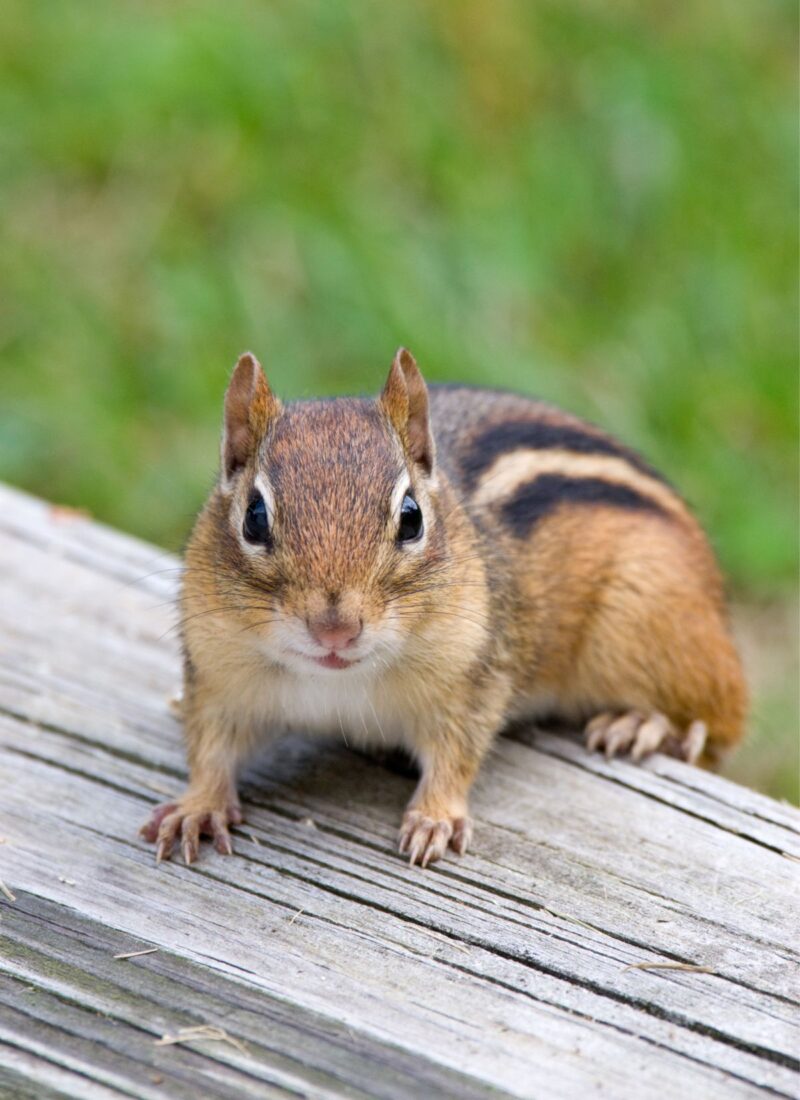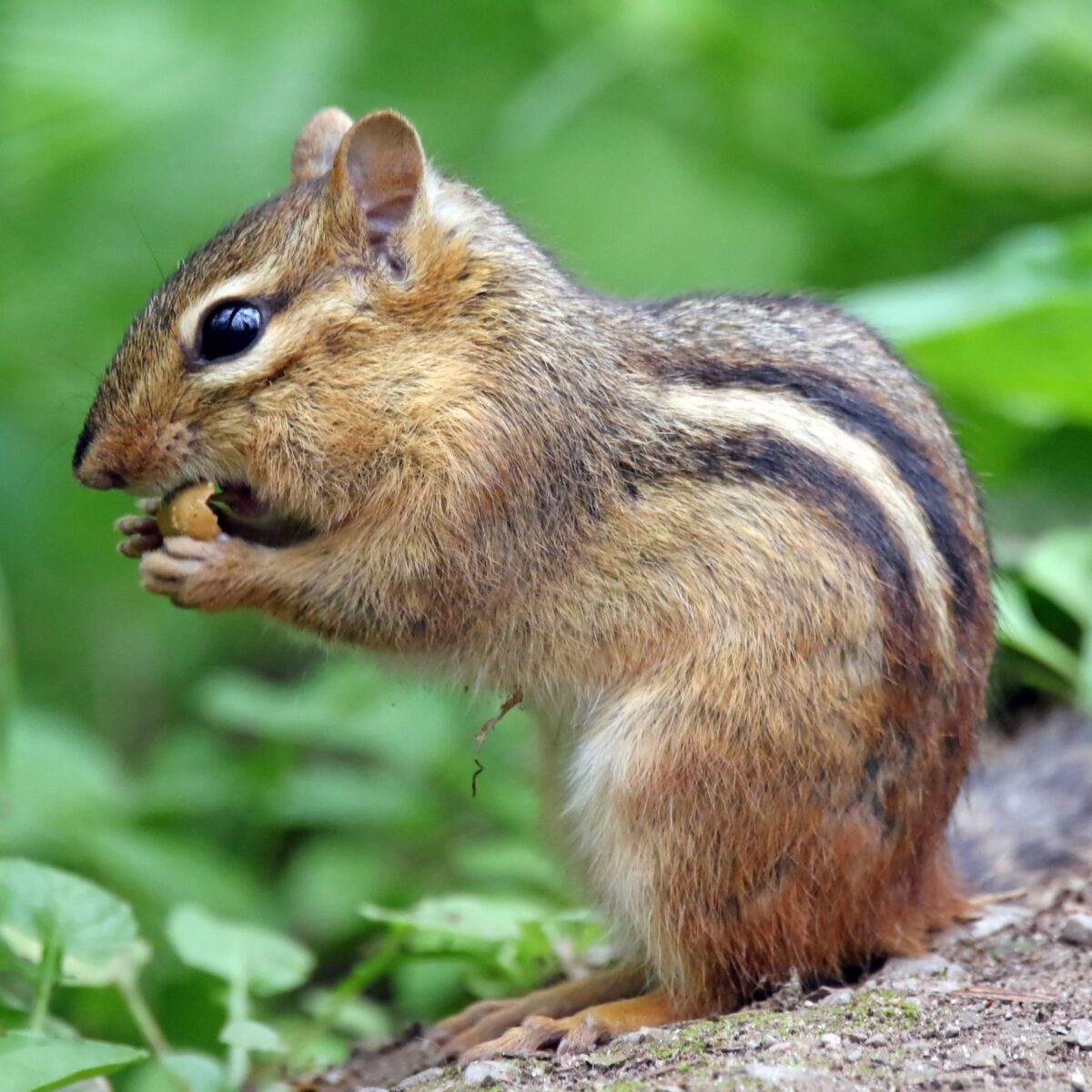
Woah! What was that fast flash of fur on the ground? It must have been an Eastern chipmunk running to its hole. You have probably seen a chipmunk in your backyard or at the park, running back and forth between their homes and under trees to look for food, or heard one making a “chip-chip” call. These tiny rodents are found throughout the eastern United States and southern Canada, and are very important to their habitat. Eastern chipmunks help disperse seeds. One chipmunk can gather up to 165 acorns in one day using its face luggage and speedy feet. Sometimes the chipmunk drops a seed or acorn, spreading plants to new areas. In a nutshell, eastern chipmunks are awesome! (Pun intended).
Face Luggage

Eastern chipmunks are omnivores, eating slugs, insects, worms, and bird eggs, as well as acorns, leaves, mushrooms, berries, and seeds. They are food hoarders and amass tall piles of food in their nests, especially as winter approaches. Because an eastern chipmunk does not have enough fat reserves to survive an uninterrupted hibernation, it periodically wakes up every few days throughout the winter to eat and forage, if necessary. This is called torpor.
An eastern chipmunk is a homebody and does not often eat outside its nest. Its small size makes the chipmunk a target for bigger animals, such as hawks, raccoons, snakes, and other predators, so it tends to stay in its underground home as much as possible. Even though the eastern chipmunk is very small, at about 8 to 10 inches long, including its tail, it can carry quite a bit of food in its cheek pouches. The pouches on either side of the chipmunk’s mouth are extremely useful in carrying large quantities of food back to its nest. Each pouch is made of stretchy skin that is separate from the chipmunk’s mouth, keeping the food dry and preventing the chipmunk from choking as it runs back and forth to its home. The pouches can be filled with enough food to make the eastern chipmunk look three times its size! See how another rodent with cheek pouches carries its food in this video.
Speedy Feet

Did you know a group of chipmunks is called a scurry? It makes sense, since they can move so quickly, and scurry from place to place looking for food. A chipmunk can run up to 21 miles per hour! For context, a human male’s average running speed is 8 miles per hour. An eastern chipmunk could easily outrun you in a race. The reason they can run so quickly is because of their tiny feet and bodies. Chipmunks have small feet with five toes on their hind legs and four toes on their front legs, which aids agility and allows them to evade predators. They are also very light. A chipmunk weighs anywhere from 2 to 5 ounces, which is about the weight of a deck of cards.
Immortal Teeth

If you have ever chipped your tooth, you likely went to the dentist to get it fixed. The eastern chipmunk does not have this problem. Their incisors, the front pairs of teeth on the top and bottom of their mouths, never stop growing. A chipmunk must grind its teeth often to keep them short enough to fit comfortably in the chipmunk’s mouth. Doing this also sharpens their teeth. Eastern chipmunks need to keep their teeth sharp to break apart nuts, seeds, and acorns, as well as give them a better advantage over prey and predators.
Unfortunately, eastern chipmunks also grind and gnaw on other things to keep their teeth short and sharp, such as pipes, drywall, and wood. This can cause damage to homes and other structures. However, because eastern chipmunks are not social creatures, there is usually only one causing problems. The best way to prevent this is by planting trees and putting bird feeders away from the home.
About the Author:

Lydia Potter graduated from Indiana University at the end of 2022 with a degree from O’Neill School of Public and Environmental Affairs, and was recently hired as the Donor Relations Manager at WonderLab. Lydia grew up watching and listening to Alvin and the Chipmunks, so she was excited to research eastern chipmunks. She was disappointed to learn that they do not actually sing pop-song covers.
Sources
Michigan State University Pesticide Education. (2001). Rodents. Michigan State University. Accessed February 22, 2023 from https://www.canr.msu.edu/ipm/uploads/files/Community_and_Schools_PDFs/rodentfs.pdf
New Jersey Division of Fish and Wildlife. (n.d.). Eastern Chipmunk. Accessed February 22, 2023 from https://www.state.nj.us/dep/fgw/pdf/education/chipmunk.pdf.
Vermont Fish and Wildlife. (n.d.). Eastern Chipmunk Fact Sheet. Main.gov. Accessed February 22, 2023 from https://www.maine.gov/dacf/php/gotpests/othercritters/factsheets/chipmunk-vt.pdf
Wildlife Journal Junior. (n.d.). Eastern Chipmunk – Tamias striatus. New Hampshire PBS. Accessed February 22, 2023 from https://nhpbs.org/wild/easternchipmunk.asp

Leave A Comment